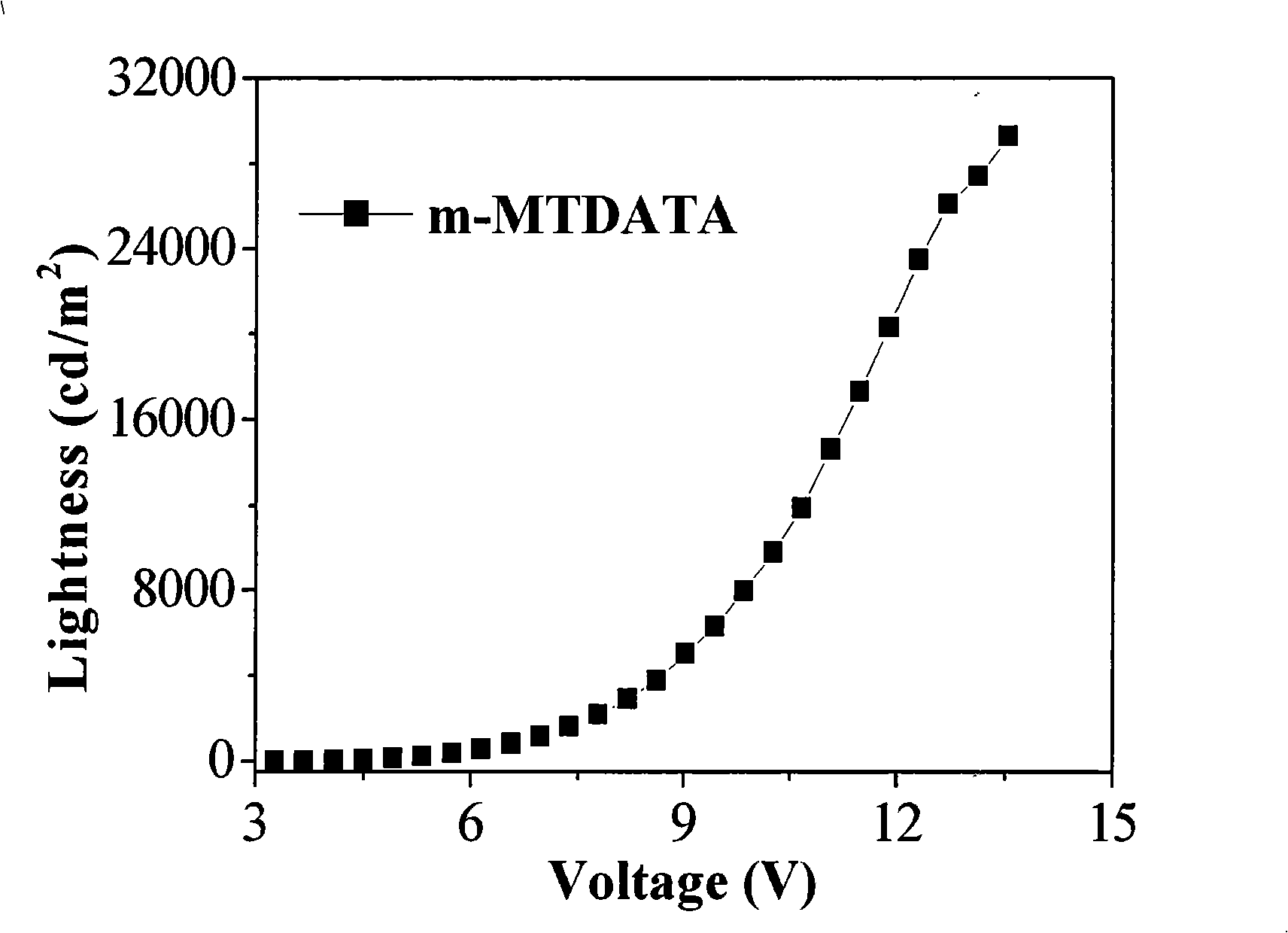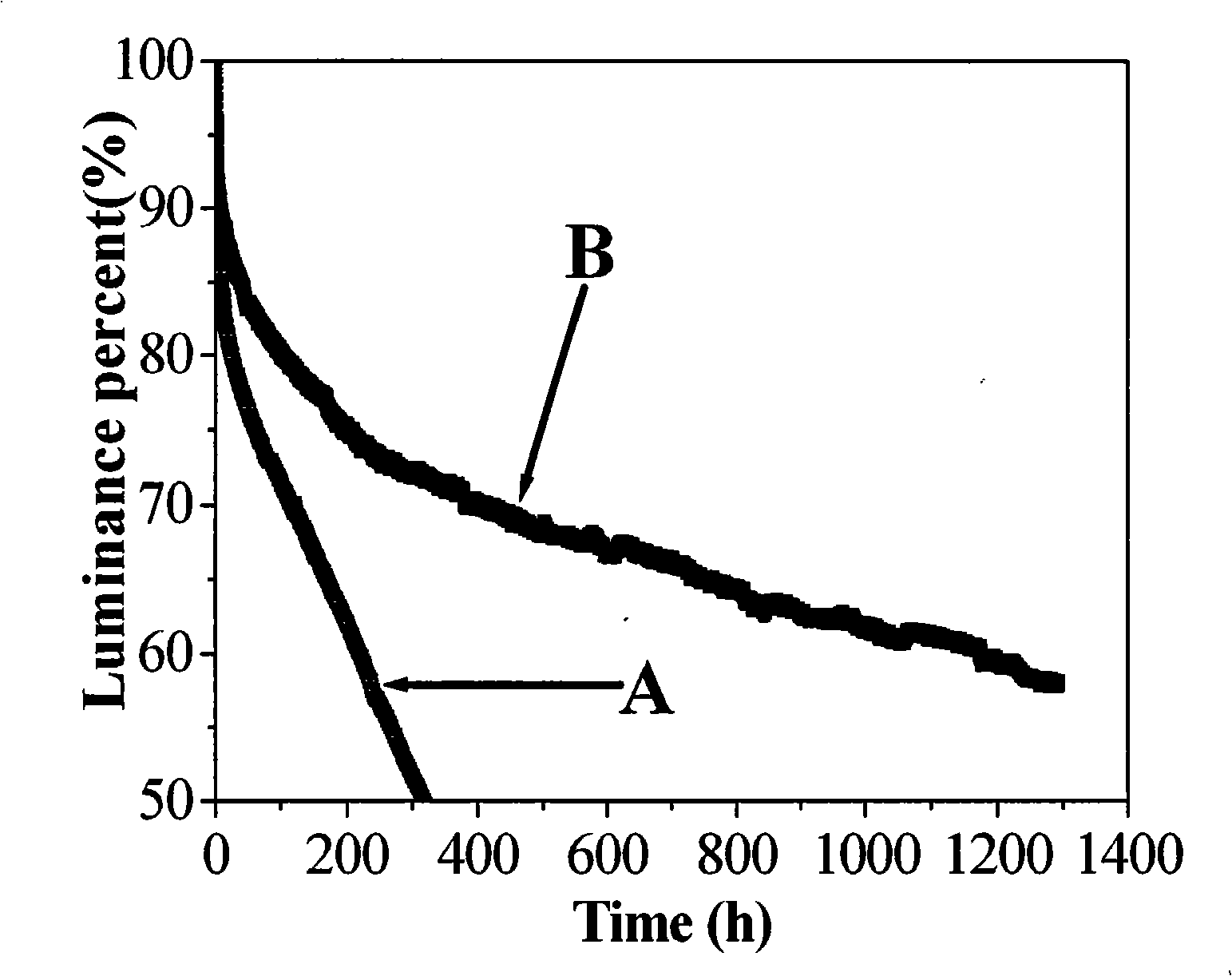Hole injection layer of organic small molecular and electroluminescent device thereof
A technology of electroluminescent devices and hole injection layers, which is applied in the direction of electric solid devices, electrical components, semiconductor devices, etc., can solve the problems of high requirements for equipment and environment, difficult to accurately control the doping ratio, and low yield. Achieve low requirements for equipment and environment, realize large-area preparation, and meet the effect of commercial use
- Summary
- Abstract
- Description
- Claims
- Application Information
AI Technical Summary
Problems solved by technology
Method used
Image
Examples
preparation example Construction
[0036] (3) Preparation of each organic functional layer: Put the spin-coated and dried substrate 1 into a vacuum chamber, and sequentially deposit a layer of hole transport material to form the hole transport layer 4. The transport materials are diamine compounds and triphenylamine compounds, preferably NPB or TPD, the evaporation rate of the material film is 0.01~0.5nm / s, and the film thickness is 10~80nm; a layer is deposited on the hole transport material The organic light-emitting material forms the organic light-emitting layer 5. The organic light-emitting material is one of metal organic complexes, aromatic fused ring compounds, phenanthroline compounds or carbazole derivatives, as well as various fluorescent dyes and phosphorescent dopants. For the miscellaneous light-emitting layer, the evaporation rate of the material film is 0.01-0.5nm / s, and the film thickness is 20-80nm; a layer of electron transport material is evaporated on the organic light-emitting material to form...
Embodiment 1
[0039] Reference now figure 1 The electroluminescent device according to the first embodiment of the present invention has the following structure:
[0040] Glass (plastic) substrate / ITO(100nm) / m-MTDATA(50nm) / NPB(10nm) / Alq 3 (60nm) / LiF(0.5nm) / Al(80nm)
[0041] (1) Cleaning the glass substrate with ITO pre-engraved: Use hot detergent ultrasonic and deionized water ultrasonic method to clean the transparent conductive substrate ITO glass, after cleaning, place it under an infrared lamp to dry, where the conductive The ITO film on the substrate is used as the anode layer of the device. The sheet resistance of the ITO film is 5Ω~100Ω, and the film thickness is 80~280nm. Figure 8(a) is the surface topography of ITOAFM;
[0042] (2) Organic small molecule hole injection layer: Place the above-mentioned cleaned and dried ITO glass on the KW-4A homogenizer, and spin-coat the configured 15mg / ml m-MTDATA chlorobenzene solution by static batching method For the film, the speed of the homoge...
Embodiment 2
[0049] Reference now figure 1 The electroluminescent device according to the second embodiment of the present invention has the following structure:
[0050] Glass (plastic) substrate / ITO(100nm) / NPB: m-MTDATA(50nm) / NPB(10nm) / Alq 3 (60nm) / LiF(0.5nm) / Al(80nm)
[0051] (1) Cleaning of the glass substrate pre-engraved with ITO: Refer to the corresponding process in Example 1;
[0052] (2) Mixed organic small molecule hole injection layer: The mass ratio of NPB to m-MTDATA is 1:3, the concentration of the mixed solution is controlled at 15mg / ml, the solvent is preferably chlorobenzene, and the spin coating and drying conditions refer to the corresponding process in Example 1. Figure 8(d) is an AFM image of the surface morphology of the spin-coated organic small molecule hole injection layer.
[0053] (3) Preparation of each organic functional layer: refer to the corresponding process in Example 1;
[0054] (4) Preparation of the cathode: refer to the corresponding process in Example 1...
PUM
 Login to View More
Login to View More Abstract
Description
Claims
Application Information
 Login to View More
Login to View More - R&D
- Intellectual Property
- Life Sciences
- Materials
- Tech Scout
- Unparalleled Data Quality
- Higher Quality Content
- 60% Fewer Hallucinations
Browse by: Latest US Patents, China's latest patents, Technical Efficacy Thesaurus, Application Domain, Technology Topic, Popular Technical Reports.
© 2025 PatSnap. All rights reserved.Legal|Privacy policy|Modern Slavery Act Transparency Statement|Sitemap|About US| Contact US: help@patsnap.com



